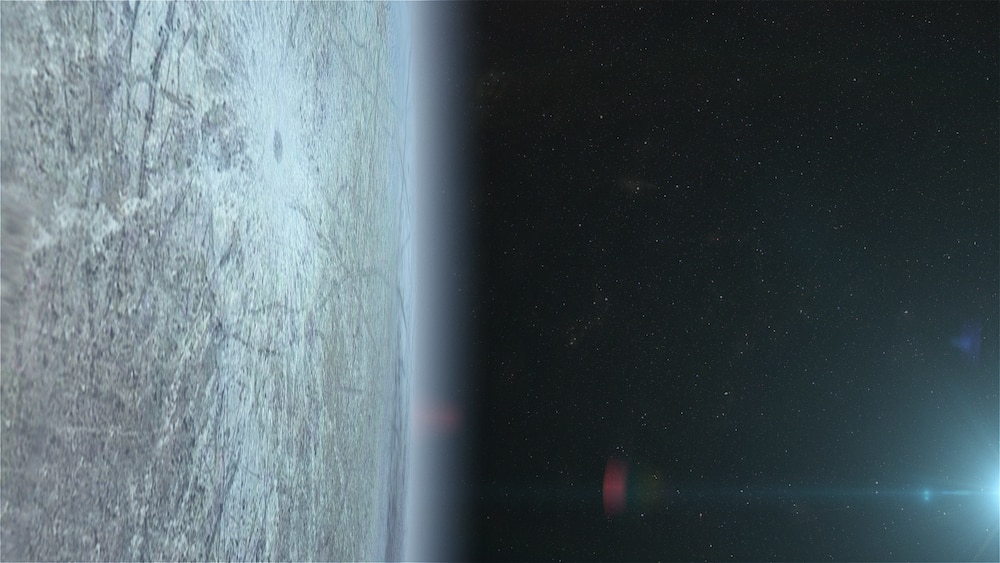Create a free profile to get unlimited access to exclusive videos, sweepstakes, and more!
Alien microbes are most likely to be crawling in these parts of the solar system
If they do exist, they'd put the "extreme" in "extremophile."

Before we start searching for alien life-forms on faraway exoplanets, where could we possibly find them in our own cosmic backyard?
Extraterrestrial microbes are most likely to be lurking in seven bodies unnervingly close to Earth. If you suspected Mars, Europa, or Enceladus, you’re right. If Titan, Ganymede, Callisto, or Pluto was in the back of your mind, guess what — you’re also right. There is something about every one of these floating orbs that could mean habitability. Life, at least as we know it, can only survive in specific conditions, but those might be found beyond our planet.
For now, we have no idea if something is swimming in the depths beneath Europa’s icy crust, crawling through a Martian lava tube or eating methane on Titan, but mirror environments on Earth give us something to guess at. Extremophiles that thrive in those environments also do. That is what fascinated researcher Dimitra Atri, who led a study recently uploaded to the preprint server arXiv. He and his team are the brains behind the Microbial Habitability Index (MHI), which quantifies chances of habitability to possibly guide us to life.
“We combined data on extremophiles and planetary-analog environments on Earth, then developed a method to make sense of everything,” he told SYFY WIRE. “MHI is an attempt to quantify this and create an algorithm to find the best places to look for life in the solar system.”
Alien microbes might be comparable to life on Earth. To find out how likely it is that something is alive somewhere in the solar system, the researchers came up with the six environmental factors they believed were most important for hypothetical alien life. They are temperature, pressure, UV radiation, ionizing radiation, acidity, and salinity. For each factor, there is something on Earth that can survive its extremes. The bacteria Deinococcus radiodurans can survive brutal radiation several times higher than what hits the Martian surface.
There are also things on Earth that eat rocks, and chemolithotrophs like these could potentially thrive in places where there are minerals changed by chemical weathering. Another experiment that tried to find out what microbes on Mars (if they exist) could be like or ever were like used chemolithotrophs for more insight. If life ever existed on Mars, it is highly likely that the Red Planet was a breeding ground for chemolithtrophic microbes such as Acidithiobacillus ferrooxidans or Metallosphaera sedula. The former can also make it in extremely acidic environments.
“A. ferrooxidans was put in simulated Martian conditions, and at the end of one week, it survived without any loss of viability,” said Atri. “The conditions were similar to that of shallow subsurface environments of Mars and also helped in the reduction of minerals.”
The MHI found environmental factors that fall within the habitable range of Earth’s extremophiles. Not every environment exists on every candidate body, but each is found somewhere. They are icy poles, surface continent, subsurface continent, subsurface ices, ambient ocean, deep ocean floor, and hydrothermal vents. Hydrothermal vents on Earth are acidic like those on Enceladus. They would be a haven for methanogens, or microbes that metabolize carbon dioxide and reduce it to methane. They would probably love it on Enceladus.
When three types of methanogenic and thermophilic microbes — meaning they not only produced methane but live in extreme heat — were analyzed, they showed they could possibly live on Saturn’s frozen moon without much of a problem. Methanothermococcus okinawensis proved it was the most likely to survive by showing that it had a higher stability and self-replicated more under conditions like those on Enceladus. Methanogens might also exist on Titan and possibly be one of the reasons there is so much methane on that moon.
NASA’s upcoming Europa Clipper and Dragonfly missions will take off for Europa and Titan in 2024 and 2027, and if Atri’s study is any indication, there needs to be a spacecraft that will also explore Enceladus. Astrobiologists are impatiently waiting for the Martian samples collected by Perseverance to make it back here through the Mars Sample Return Mission. Atri is also curious about what might lie beneath the surface of Mars.
“I would love to see data on subsurface environments, especially the shallow subsurface environment of Mars,” he said. “We have learnt a lot by scratching the surface, now we need to dig a bit deeper to learn more.”


























